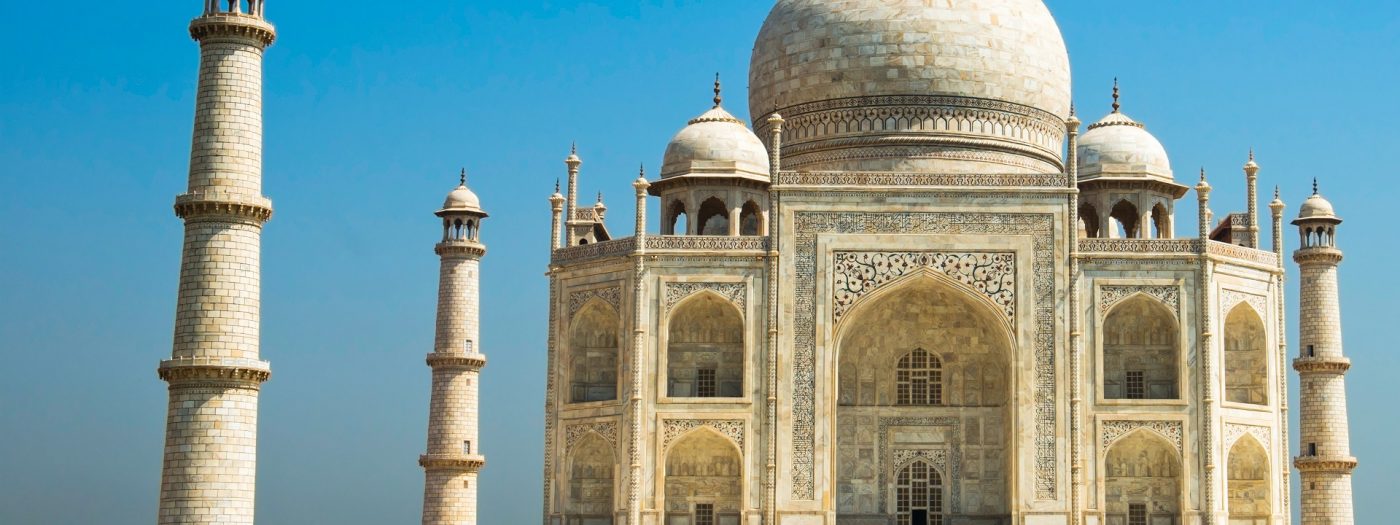Date built: 1632 – 1653
Height: 73m
Area: 17ha
Built for: Mumtaz Mahal
Architecture: Mughal Archictecture
Material: Marble
The Taj Mahal is a humongous mausoleum commissioned by the Mughal emperor Shah Jahan to act as a tomb for his deceased wife in 1632. It was constructed over a twenty-year period on the bank of the Yamuna river in Agra, India. It is recognised as one of the most well-known precedents of Mughal Architecture and contains influences of Indian, Persian and Islamic Architecture.
Right at the centre of this enormous complex lies the Taj Mahal, constructed with pure white marble that changes colour depending on the daylight. Till date, it is considered one of the world’s most celebrated structures and was designated a UNESCO World Heritage Site in 1983.
The Taj Mahal was constructed with white marble inlaid with semi-precious stones, using a technique known as Pietra dura. Jade, lapis lazuli, crystal, turquoise and amethyst were the stones that were used in this process. The large central dome reaches the height of 240 feet and is surrounded by four smaller domes and four minarets, one at each corner.
The Taj Mahal also features a towering gateway of red sandstone and a garden divided into four parts through channels of water running across from it. There is also a red sandstone mosque built in the complex and an identical building just opposite to it known as Jawab (“mirror”).
Some people believe that a second complex known as the Black Taj was to be built across the river where Shah Jahan’s remains would be buried, but he died before it could be built. The structures were to be connected through a bridge.



